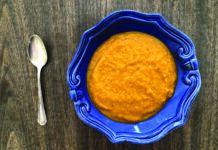Answer :Copper is an essential mineral with an established Recommended Dietary Allowance (RDA) of 900 micrograms (0.9 milligrams) per day for adults and a Tolerable Upper Intake Level (UL) of 10,000 micrograms (10 milligrams) daily. (The UL is the maximum daily intake of a nutrient that is likely to pose no risks of adverse health affects for almost all individuals.) According to Jeffrey Blumberg, PhD, director of the Antioxidants Research Laboratory at Tufts Jean Mayer USDA Human Nutrition Research Center on Aging, high levels of zinc may interfere with the absorption of copper. Since a high dose of zinc-80 milligrams, compared to the RDA of 9 milligrams daily for women and 11 for men-was used in the AREDS supplement, copper was added to the formula. In this case, the copper is not aimed at eye health but rather to offset the potential for impaired copper bioavailability caused by the high levels of zinc.
Thats not to say, however, that copper doesnt have important health benefits. According to the USDAs Agricultural Research Service (ARS), Copper often is overlooked as an important nutrient when considering diets that promote cardiovascular health in humans. One indication of the relationship between copper and heart health comes from the finding that copper concentrations in diseased hearts often are lower than the concentrations found in healthy hearts.
Another comes from recent research at the ARS Grand Forks Human Nutrition Research Center, showing that dietary copper may be beneficial even when the heart already is diseased. In the experiments, mice consuming a high-copper diet reversed a surgically induced enlargement of the heart and showed greatly reduced structural damage to the heart. More research will be needed to see if these findings can be extended to humans, however.
Adding copper-rich foods to the diet may be particularly important for women, according to ARS experts. Dietary surveys indicate that 10-25% of women have copper intakes lower than the RDA.
Foods that are high in copper content include shrimp, lobster, crab, whole grains, nuts, seeds, beans, lentils and mushrooms. Its practically impossible to get an unsafe amount of copper from food alone; for example, a three-ounce serving of shrimp contains just 163 micrograms of copper. Even dietary supplements dont approach the UL for copper: A typical multivitamin or vision formula supplement might contain 2,000 micrograms (2 milligrams) of copper, just one-fifth the limit of safety.



















